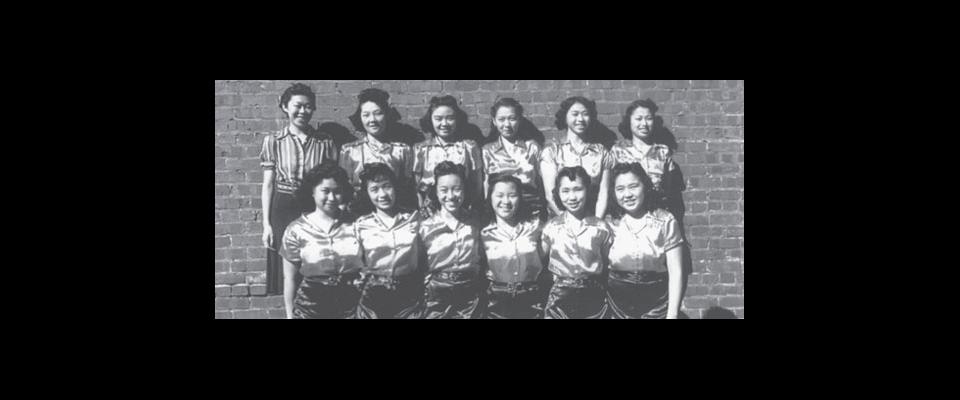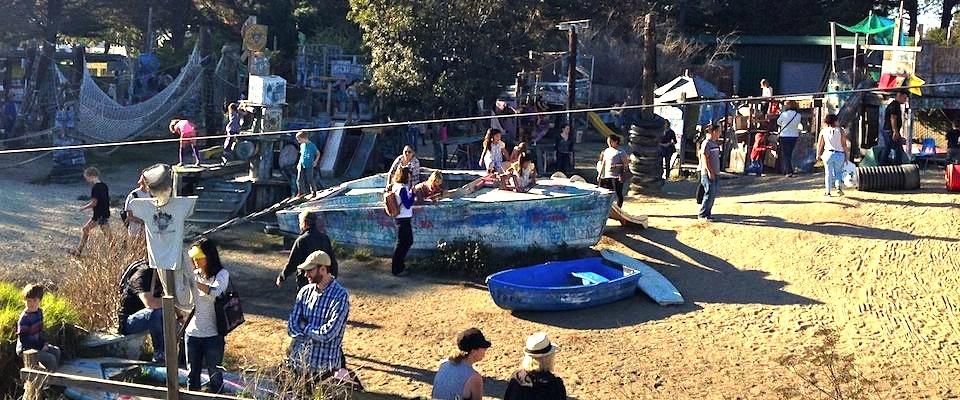Other kids might have fond memories of baking with grandma. Kathleen Yep ‘93, M.A. ‘98, Ph.D. ‘02, remembers playing basketball with hers. “My grandmother had no qualms about flagrantly fouling,” says Yep. Her grandmother Franche Yep, now 94, was one of the Mei Wahs, an all-Chinese, all-women basketball team of the 1930s. They played in the Chinese playground in the heart of San Francisco’s Chinatown, an unlikely bit of open space in one of the most densely packed parts of the city. Yep has written the story of basketball and that playground in Outside the Paint, new this year from Temple University Press.
“The basketball playground was a place of refuge,” says Yep. The players lived in small apartments, maybe sharing a bathroom in the hallway or going down the street to the Y to take a shower. Their parents worked in laundries and garment factories. They couldn’t afford uniforms and played in street clothes and jeans. “These were working-class kids who literally walked off the streets to play,” says Yep.
Out of that playground came teams like the Mei Wahs and the all-male Hong Wah Kues, an all-Chinese team that barnstormed the country like the Harlem Globetrotters. The star player of the Hong Wah Kues, Robert Lum, was 5 foot 3 inches. “They made up with their style of play,” chuckles Yep. “Chinese basketball was about movement, about speed, about pushing the ball.”
As she talked to the surviving players and leafed through their albums, Yep discovered that for many of the players it was also a way out of Chinatown. “It was an extraordinary opportunity for a working-class kid to have access to a new car to drive around the country, to interact with Chinese communities all across the nation,” she says. They were fêted in small towns in Montana where there was just one Chinese restaurant. They had banquets thrown in their honor by the Chinese in Vancouver. “One of the players had this cloth napkin he had saved from 1939,” says Yep. “And it had lipstick marks on it.”
It came with a price, however. Although the Hong Wah Kues were mostly second-generation, American-born Chinese, they were marketed as the Yellow Peril. Posters for their games would declare “war,” claiming the Chinese were “foreign invaders.” “They would go by their Chinese names,” says Yep. “And they were instructed to only speak Cantonese on court.” Off the court, they had nicknames like Freddy and Doggy.
Nowadays, the Houston Rockets’ Yao Ming might earn millions of dollars, but the players of the Chinese playground had far more modest, and significant, rewards. “They got to stay in hotels instead of cramped apartments,” she says. “But given the context of segregation and miscegenation it was liberating.” In grade school Yep dreamed of becoming the first female player in the NBA, but doesn’t play the game anymore. “The ACL in my knees has given out,” she explains. But she still enjoys her grandmother’s stories. “I think what she was telling me was that there are extraordinary things even in the most ordinary experience. Like picking up a basketball and playing in an urban court.”





















